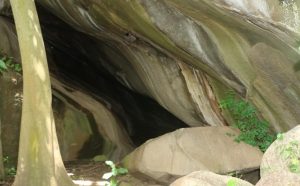A transformative tree planting initiative is currently underway on Kakapel Hills in Busia County, marking a significant step in community-led climate action.
The exercise is part of a project proposed by residents during a participatory climate risk assessment and is funded through the Financing Locally-Led Climate Action Programme, Kenya.
Leading the tree planting exercise, Busia County Director of Climate Change Dan Opilio said the variety of tree species being planted were carefully selected for their environmental benefits, particularly in addressing severe surface runoff that has plagued the region during the rainy season, leading to devastating consequences, including the destruction of homes and farmlands.

“Kakapel Hills, however, is more than just a site for ecological restoration. It is home to the Kakapel National Monument, a cultural treasure renowned for its ancient rock art, believed to date back between 2,000 and 4,000 years.
The intricate paintings—depicting animals, human figures, and abstract symbols—are attributed to the Twa hunter-gatherers, ancestors of the current Iteso people,” says Director Dan Opilio.
The rock art, protected by the National Museums of Kenya and the County Government of Busia, is a vivid testament to early human life, spirituality, and expression.
The site holds profound cultural and spiritual significance for the Iteso and Bantu communities, many of whom regard it as sacred, believing it to be the dwelling place of ancestral spirits.
The tree planting effort not only aims to protect the surrounding environment but also complements ongoing heritage conservation efforts.
By stabilising the hillsides and reducing erosion, the project supports the preservation of this historically significant landscape and enhances its appeal as a destination for eco-cultural tourism.
Local participation remains at the heart of the initiative, with the Iteso community playing an active role in both environmental and cultural conservation.
Together, they are ensuring that Kakapel’s natural beauty and historical legacy are safeguarded for generations to come.
By Absalom Namwalo





